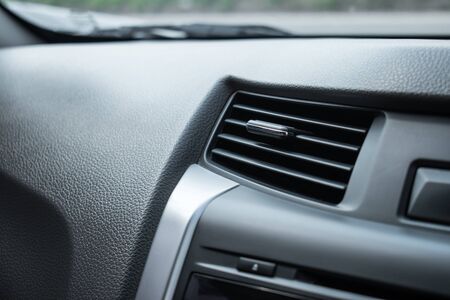1. Understanding Britain’s Unique Climate Impact on Car Batteries
Britain’s weather is infamous for its unpredictability, and this has a measurable effect on car battery performance and lifespan. Unlike climates that are consistently hot or cold, the UK experiences frequent rain, fluctuating temperatures, and elevated humidity throughout the year. These factors create unique challenges for vehicle owners aiming to maximise battery longevity. Moisture from persistent rain can lead to corrosion around battery terminals, impeding electrical connectivity. Meanwhile, temperature swings—from chilly mornings to mild afternoons—force batteries to work harder, increasing internal wear and reducing overall efficiency. High humidity also encourages condensation within the engine bay, which can accelerate deterioration of both battery casings and internal components.
| Climate Factor | Impact on Battery |
|---|---|
| Frequent Rain | Increases risk of terminal corrosion and water ingress |
| Variable Temperatures | Causes expansion/contraction cycles, decreasing battery life |
| High Humidity | Encourages condensation and short-circuit risks |
The combination of these elements means British drivers must adopt specific maintenance practices tailored to local conditions. By understanding how these climatic variables interact with car batteries, motorists can take informed steps to safeguard their vehicle’s electrical system against premature failure.
2. Recognising Early Warning Signs of Battery Wear
Understanding and spotting the early warning signs of battery wear is crucial for British motorists who want to prolong their car battery’s lifespan amidst the nation’s unpredictable weather. The UK’s cool, damp climate can exacerbate battery deterioration, especially during winter months or periods of persistent rain. Proactive detection enables drivers to address issues before being stranded on a chilly morning. Key indicators include sluggish engine starting, where the engine cranks more slowly than usual; dim or flickering headlights, particularly noticeable when idling at traffic lights; and dashboard warning lights that may illuminate intermittently. Regular inspections should form part of your routine vehicle checks—ideally every few weeks or before embarking on longer journeys. Pay attention to any corrosion around the battery terminals and ensure all electrical systems function optimally. Below is a table summarising the most common warning signs British drivers should monitor:
| Warning Sign | What to Look Out For |
|---|---|
| Sluggish Starting | Engine slow to crank, especially in cold or wet weather |
| Dim Headlights | Headlights appear less bright, particularly when stationary |
| Dashboard Warnings | Battery/engine warning lights flicker or stay illuminated |
| Corroded Terminals | White or bluish powder visible around battery connections |
| Electrical Malfunctions | Issues with radio, electric windows, or central locking |
By integrating these checks into your regular maintenance schedule and responding promptly to any anomalies, you’ll significantly reduce the likelihood of unexpected breakdowns—an essential consideration given Britain’s ever-changing climate.
![]()
3. Practical Maintenance Tips for Everyday Drivers
Proper maintenance is crucial for extending the lifespan of your car battery, especially in the variable and often damp British climate. Below are expert-recommended practices every driver can incorporate into their routine to protect against premature battery failure.
Cleaning Battery Terminals
Damp and cold conditions in Britain can accelerate the build-up of corrosion on battery terminals, which impairs electrical flow and overall performance. Regularly cleaning the terminals with a mixture of bicarbonate of soda and water, using a non-metallic brush, helps prevent corrosion. After cleaning, ensure terminals are thoroughly dried before reconnecting.
Ensuring Proper Battery Mounting
With British roads frequently subjected to potholes and uneven surfaces due to weather extremes, securing your battery firmly in its tray is vital. A loose battery can vibrate excessively, causing internal damage or even short circuits. Always check that the battery clamp is tight enough to prevent movement but not so tight as to damage the casing.
Checking Fluid Levels
If your vehicle uses a traditional lead-acid battery, monitoring electrolyte levels is essential. In cold conditions, fluid evaporation is less common; however, frequent topping up may still be required due to overcharging or leaks exacerbated by dampness. Use only distilled water and fill to the manufacturer’s recommended mark.
Routine Maintenance Checklist
| Task | Recommended Frequency |
|---|---|
| Clean terminals | Every 3 months or after heavy rainfall/frost |
| Check battery mounting | Monthly or after rough journeys |
| Inspect fluid levels (if applicable) | Monthly during autumn/winter |
Expert Insight
By adhering to these practical tips tailored for Britain’s unique climate, you significantly reduce the risk of unexpected breakdowns and extend your car battery’s operational life. These simple interventions not only enhance reliability but also deliver cost savings by postponing expensive replacements.
4. The Importance of Routine Vehicle Usage
One often overlooked aspect of car battery maintenance in Britain’s unpredictable climate is the significance of regular vehicle usage. With the UK’s frequent rainy spells, cold snaps, and even extended periods of inactivity during lockdowns, many motorists inadvertently put their batteries at risk by leaving vehicles idle for too long. Regularly driving your car helps keep the battery charged and prevents sulphation—a process where lead sulphate crystals build up, reducing the battery’s ability to hold charge. Even short trips can make a notable difference, ensuring the alternator has an opportunity to recharge the battery.
Why Does Inactivity Harm Car Batteries?
Leaving your vehicle unused for extended periods allows charge levels to drop naturally due to small but constant electrical draws from alarm systems, clocks, and onboard computers. Over time, this can leave you with a flat battery just when you need your car most—an all-too-common scenario during Britain’s winter months or after holidays.
Best Practices for Maintaining Battery Health
| Frequency of Use | Recommended Action |
|---|---|
| Daily | No special action needed; regular driving maintains charge. |
| Every few days | Take at least a 20-minute drive to allow sufficient recharging. |
| Weekly or less | Consider using a trickle charger or disconnecting the battery if safe and practical. |
Special Advice During Lockdowns or Prolonged Poor Weather
If government guidance or severe weather keeps you off the roads, it’s wise to start your engine and let it run for 15-20 minutes once a week (in a well-ventilated area). Alternatively, investing in a smart battery maintainer is particularly beneficial in Britain’s damp climate—these devices automatically monitor and top up your battery without overcharging.
Professional Insight:
Avoid repeated short journeys whenever possible, as these may not give the alternator enough time to fully replenish the battery—especially when using energy-hungry features like headlights and heated windscreens during dark British evenings. Instead, aim for longer drives when feasible to optimise both battery health and overall vehicle performance.
5. Smart Charging Practices for British Conditions
To effectively prolong the lifespan of your car battery in Britain’s variable climate, adopting smart charging practices is essential—especially if your vehicle is often parked outdoors or used infrequently. Given the prevalence of short urban journeys and on-street parking typical across UK towns and cities, knowing how and when to use different charging solutions can make all the difference.
Trickle Chargers: Ideal for Periods of Inactivity
Trickle chargers are particularly beneficial for motorists who leave their vehicles unused for extended periods, such as during holidays or if you only drive at weekends. These devices deliver a low, steady charge, preventing battery discharge without the risk of overcharging—a common issue in colder, damp British winters. For urban dwellers with access to off-street parking or garages, investing in a quality trickle charger offers peace of mind and consistent battery health.
Smart Chargers: Optimised for Modern Lifestyles
Unlike basic chargers, modern smart chargers automatically adjust charging rates based on the battery’s condition. Many models include diagnostic features, desulfation modes, and temperature compensation—crucial for fluctuating British weather. This makes them ideal for UK drivers juggling unpredictable schedules or those reliant on public transport during the week. Below is a comparison of key charger types:
| Charger Type | Main Benefit | Best Suited For |
|---|---|---|
| Trickle Charger | Prevents slow discharge during inactivity | Garage-parked cars; infrequent use |
| Smart Charger | Adaptive charging & diagnostics | Daily drivers; varied usage patterns |
Jump-Starting Safely in Urban Settings
If your battery does go flat—perhaps after leaving headlights on overnight—a safe jump-start may be necessary. In densely populated UK neighbourhoods where space is tight, portable jump starters are highly practical. They remove the need for a second vehicle and reduce disruption on busy residential streets. Remember to follow manufacturer instructions carefully and consider seeking professional help if you’re unsure; incorrect jump-starting can cause costly damage to sensitive vehicle electronics.
Summary Guidance for UK Drivers
- Choose a trickle charger if your car sits idle frequently.
- Select a smart charger for flexible, adaptive maintenance throughout the year.
- Keep a compact jump starter handy, especially in urban environments with limited access to assistance.
By tailoring your charging approach to both your driving habits and Britain’s unique climate, you can significantly extend your car battery’s service life while avoiding unnecessary inconvenience and expense.
6. Choosing the Right Replacement Battery for UK Roads
When your car battery inevitably reaches the end of its useful life, selecting a suitable replacement is crucial for ensuring reliable performance in Britain’s often unpredictable climate. The market offers several types of batteries—Absorbent Glass Mat (AGM), Enhanced Flooded Battery (EFB), and conventional lead-acid units. Each type presents distinct advantages and potential drawbacks, especially when assessed against typical UK driving patterns, commuter distances, and weather conditions.
Performance Review: Battery Types vs. British Usage Patterns
British motorists encounter a unique blend of challenges: frequent short journeys, high stop-start traffic in urban centres, and extended periods of damp or cold weather. These factors demand a battery that not only delivers robust starting power but also copes well with deep cycling and occasional inactivity.
| Battery Type | Best For | Climate Resilience | Typical Lifespan | Suitability for Start-Stop Systems |
|---|---|---|---|---|
| AGM (Absorbent Glass Mat) | Modern vehicles with start-stop systems & heavy accessory use | Excellent (handles cold & fluctuating temps well) | 5-7 years | Highly suitable |
| EFB (Enhanced Flooded Battery) | Standard start-stop vehicles & commuters | Good (better than conventional in British dampness) | 4-6 years | Moderately suitable |
| Conventional Lead-Acid | Older cars without start-stop tech; infrequent city use | Adequate (may struggle with repeated short trips) | 3-5 years | Not recommended |
The Case for AGM and EFB Technologies on British Roads
AGM batteries, with their sealed construction and superior vibration resistance, thrive in the UK’s variable temperatures and are particularly adept at supporting modern electrical loads—think heated seats, sat-navs, and dash cams. They’re also less susceptible to sulfation during short trips where full recharging rarely occurs.
EFB batteries, though more affordable than AGM, still outperform traditional units by coping better with deep discharges common in urban stop-start traffic. For most daily commuters in cities like London or Manchester, an EFB offers solid value and enhanced resilience over conventional alternatives.
Key Takeaways for UK Motorists:
- If your car features a start-stop system or you often endure traffic congestion, investing in an AGM or EFB battery is wise for longevity and reliability.
- For older vehicles primarily used for longer journeys or rural driving, a quality conventional battery may suffice—but expect shorter service intervals.
- Always consult your vehicle manufacturer’s recommendations to ensure compatibility before upgrading to advanced battery technologies.
Selecting the right replacement battery tailored to both your vehicle’s needs and Britain’s demanding climate will pay dividends in reliability, performance, and peace of mind during those chilly winter mornings or rain-soaked commutes.


